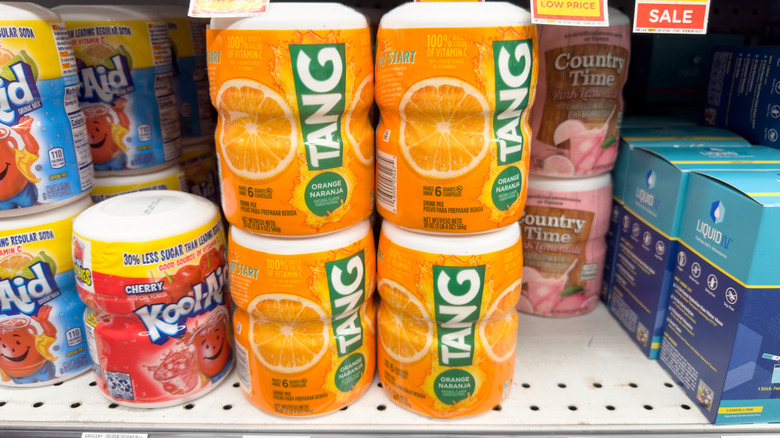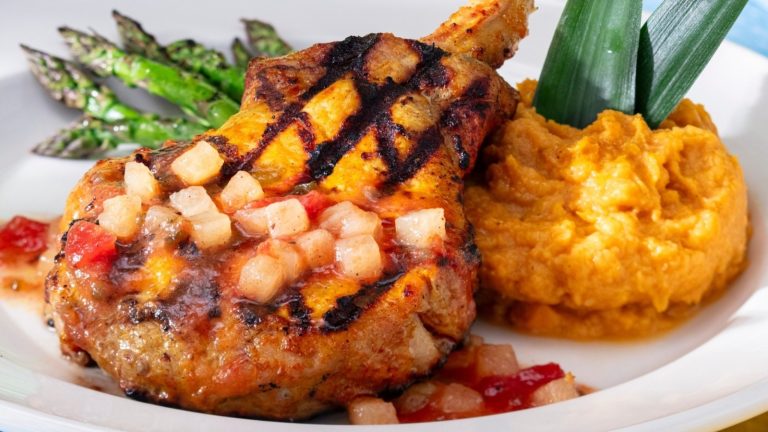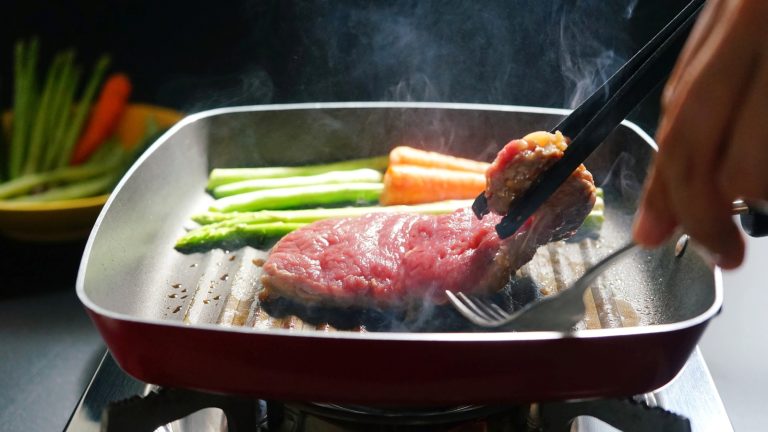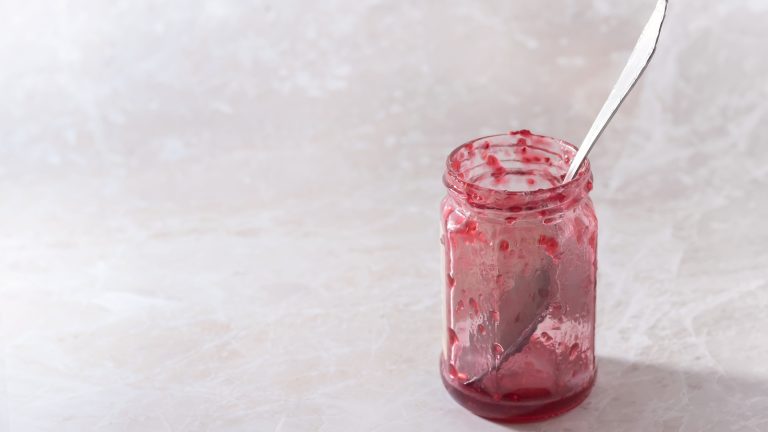We may receive a commission on purchases made from links.
You may recall the monumental moment in space exploration history when Apollo 8, the first crewed spacecraft to leave Earth’s gravitational sphere to orbit the moon, embarked on its mission. This historic voyage lasted nearly 147 hours (just over six days), paving the way for the Apollo 11 moon landing the following year, However, it also put an unassuming, bright orange, vitamin C beverage on television screens across the globe. Those tuned in to TV coverage of the event may remember Tang, which was heavily advertised as the official drink of astronauts in the 1960s. The powdered drink that yields a sweet and citrusy taste when mixed with water was originally launched as a breakfast beverage in 1957 by the American food manufacturer General Foods.
During World War II, General Foods contracted with the U.S. military to provide shelf-stable goods like instant coffee. The very same properties of easy portability and extended shelf life made Tang a suitable inclusion to keep astronauts hydrated and energized during their space missions. Consequently, Tang made its pioneering journey beyond Earth’s bounds, accompanying astronaut John Glenn on NASA’s Mercury Mission in 1962. Tang even sponsored ABC’s broadcast of the Apollo 8 mission, grabbing public attention with its advertising and becoming one of the best-selling drink mixes of the era. Despite the hype on Earth, several astronauts, including Apollo 11’s Buzz Aldrin, who famously dissed Tang, claiming, “Tang sucks!” (via TMZ) weren’t fans of this vibrant drink. With the rise of other packaged drinks over the following decades, Tang has virtually left American grocery shelves, yet it remains popular in Asian and Latin American markets.
What exactly is Tang?
While it had its moment in the American spotlight for nearly a decade because its association with NASA and space travel, what, exactly, is Tang? Was it even a healthy drink in the first place? Let’s start by breaking down the ingredients, starting with the first two, sugar and fructose, meaning lots of sugar. (However, there are sugar-free versions of Tang available.) Citric acid imparts the namesake tanginess, while the addition of preservatives and colored additives prolongs shelf life and creates the characteristic bright color of the powdered mix. Obviously, it is not the most “natural” beverage choice but still a reasonable source of a quick vitamin C boost.
Tang is now more popular outside the United States, where you may come across unique flavors in addition to the classic orange. For example, in Southeast Asia, you will find Buko Pandan Tang, while Guava is a popular flavor in Brazil. Since its heyday and inclusion in multiple extra-planetary adventures, it seems that astronauts have moved on from Tang and even evolved their ways of consuming beverages in space. This includes ingenious inventions like the capillary cup that allows astronauts to sip on a cup of joe in zero gravity. Even though Tang may seem like a relic from the past, you can always stock up on Amazon if you crave a taste of the ’60s or are just curious to try this iconic beverage. Then again, there’s always good old classic bottled orange juice (and we’ve ranked the best and worst brands).






